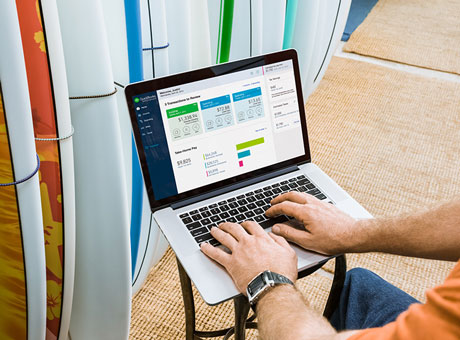If you are looking to acquire business inventory and assets at a great price, your may consider buying these items at a liquidation sale. When a business needs money to pay off its debts and has business assets it can sell, or when it wants to divest itself of inventory quickly to boost cash flow, it might participate in the liquidation process. Before you pay retail or wholesale for your business needs, you should make some informed decisions about your small-business buying activity.

What Is Liquidation, and How Can it Help Your Small Business?
What Is Liquidation?
Liquidation is a formal process of converting business assets into cash. The term ‘liquidation’ is normally applied to the closing of a business that is insolvent and can’t pay off its debts. All of the inventory plus computers, store shelves, cash registers, display cases, company vehicles, and even the building are placed in the liquidation sale. Proceeds from the liquidation are used to pay off creditors and then the firm shuts down. Formal liquidation is governed by the terms of the Canada Bankruptcy and Insolvency Act and the Companies’ Creditors Arrangement Act.
Liquidation of a business can be partial, where a firm decides to close only one aspect of its business and remains an on-going concern under a new, smaller business profile. Only assets in the affected division are sold off in a partial liquidation.
Less formally, businesses that aren’t shutting down can decide to liquidate inventory that isn’t selling well in order to raise cash. For example, you might liquidate T-shirts as surplus inventory because you’ve decided not to carry that type of merchandise anymore.
Voluntary and Forced Liquidation Sales
A business can decide to liquidate voluntarily, such as when the owner retires, or its creditors may pursue legal action to put the business into forced liquidation. Voluntary liquidation usually involves an orderly business liquidation sale, which provides a reasonable amount of time to sell your inventory and equipment, a large pool of buyers, and sales to the highest bidders.
In a forced liquidation sale, such as a sale under bankruptcy or an end-of-lease moving sale, the business is under pressure to sell. The sales time frame is smaller than in an orderly sale, and so is the buyer pool. A forced sale may take place at an auction on a set date when everything is sold. Expect lower sales prices in a forced liquidation than if for the same items in an ordered liquidation sale.
If you need to liquidate, hiring an auctioneer or auction house to conduct your liquidation sale may be a smart move. Auctioneers are in the liquidation business, so you have expert advice, advertising, and help throughout your liquidation process. Seasoned auctioneers are skilled at getting bidders to compete against each other even in forced liquidation sales, which helps raise sales prices.
Inventory Liquidation Sales
Perhaps you want to move your own surplus inventory quickly but don’t want to spend too much effort in the liquidation. Selling your products to an inventory liquidation services company is a quick and easy alternative to liquidating products yourself. However you handle your liquidation process, your goal is to sell your products as quickly as possible, so try not to let lower prices disappoint you. On the other hand, many companies liquidate their customer returns in bulk because that’s easier than reviewing each item one by one to see if its salable. This can be a buying opportunity you may want to take advantage of.
The most common way to liquidate Amazon inventory or goods in your brick-and-mortar store is to offer deep discounts to your customers. Typically, you’ll want to move product in bulk instead of by the piece. This may mean selling pallets of merchandise all at once in order to reclaim at least part of their cash value.
Another way to liquidate your inventory is through internet platforms such as eBay and Rakuten, an international online sales outlet. These digital marketplaces let you reach out to customers outside of your local market. It’s a good idea to spend time researching online markets and take site fees into account before setting your price. Pricing a product too high makes it unlikely to sell, while pricing a product too low may not cover your fees and expenses.
When you liquidate products or equipment, you’re ridding your business of burdensome debt and getting a fresh start, or freeing up space for new inventory to draw more customers to your small business and generate higher profits. With more merchandise, consumers, and money coming in, it’s likely you need help in managing it all.
Tracking and analyzing your financial performance helps you suss out key information about your business, including the areas where you knock it out of the park and ones with opportunity. Having excellent accounting software that streamlines the process lets you quickly print out reports and provides extra tools to help you excel. 5.6 million customers use QuickBooks. Join them today to help your business thrive for free.


